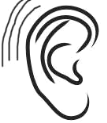0 135021 135029 135035 135039 135045 135047 135051 135057 135059 135065 135071 135075 135077 135081 135087 135089 135095 135099 135101 135105 135107 135111 135113 135115 135116 135117 135119 135120 135121 135123 135125 135129 135131 135135 135137 135141 135147 135149 135155 135159 135161 135165 135171 135177 135179 135185 135189 135191 135197 135201 135207 135215 159627


